Noise generator
(white, bandpass, pink and determinate noise)
The Software Signal generator allows to produce flat, band, pink and defined noise at the DAC output.
(white, bandpass, pink and determinate noise)
The Software Signal generator allows to produce flat, band, pink and defined noise at the DAC output.
The program Signal generator allows to produce noise signals (white, bandpass, pink, determinate noise) at the DAC output of the connected devices.
The noise type to be generated is to be selected from the context menu: right-click the section with the noise name and select the noise type you need.
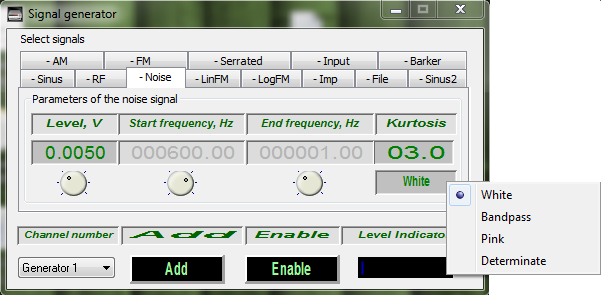
White noise is a noise of stationary type and its spectral components are evenly distributed along the frequency range.
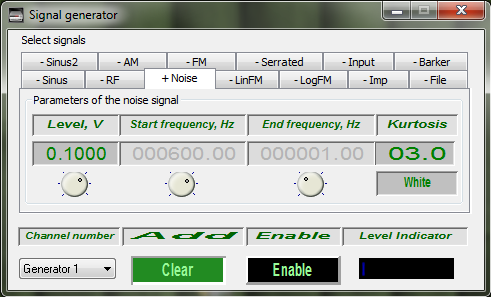 Main program window specifying the signal parameters
Main program window specifying the signal parameters
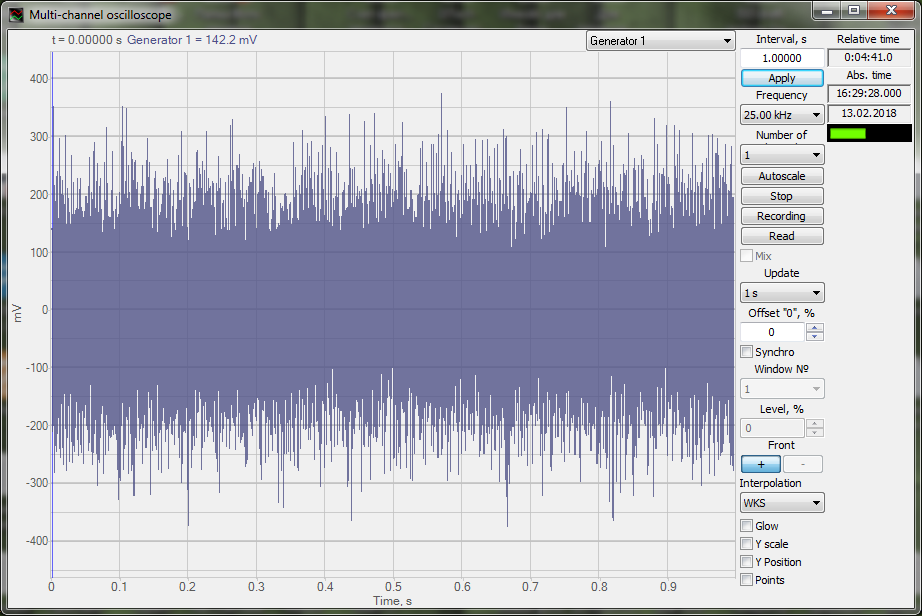 Oscilloscope pattern of the generated noise
Oscilloscope pattern of the generated noise
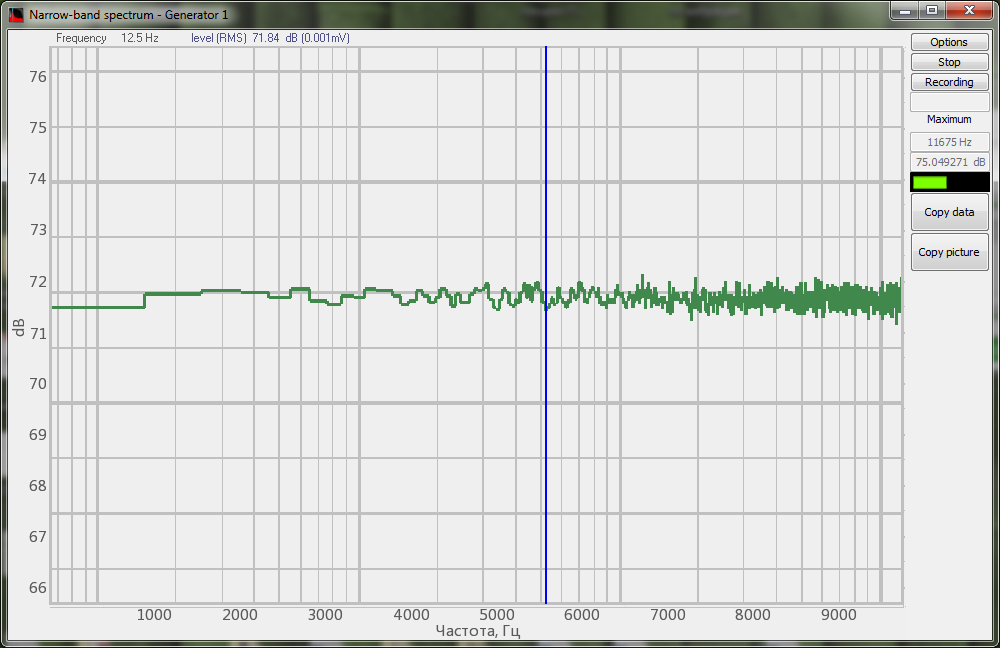
White noise signal spectrum
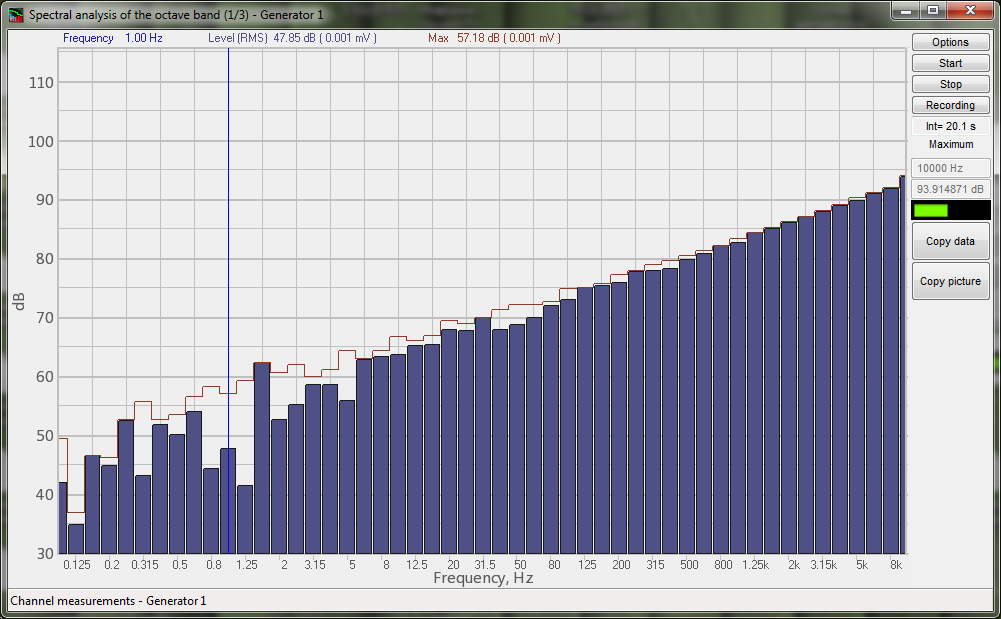 White noise signal spectrum: share-octave analysis
White noise signal spectrum: share-octave analysis
In the “White noise” and “Bandpass noise” modes, the “Noise” tab of the program “Signal generator” has an additional section “Kurtosis” (the term is also sometimes referred to as excess kurtosis).
The kurtosis is a factor that reflects the peakedness and the “tailedness” of the distribution. The kurtosis is based on the fourth moment of the distribution (μ4). In the case of normal distribution, the kurtosis value is 3.
The deviation of distribution for the white noise signal spectrum from a normal distribution with kurtosis ratio = 3 is less than 10%.
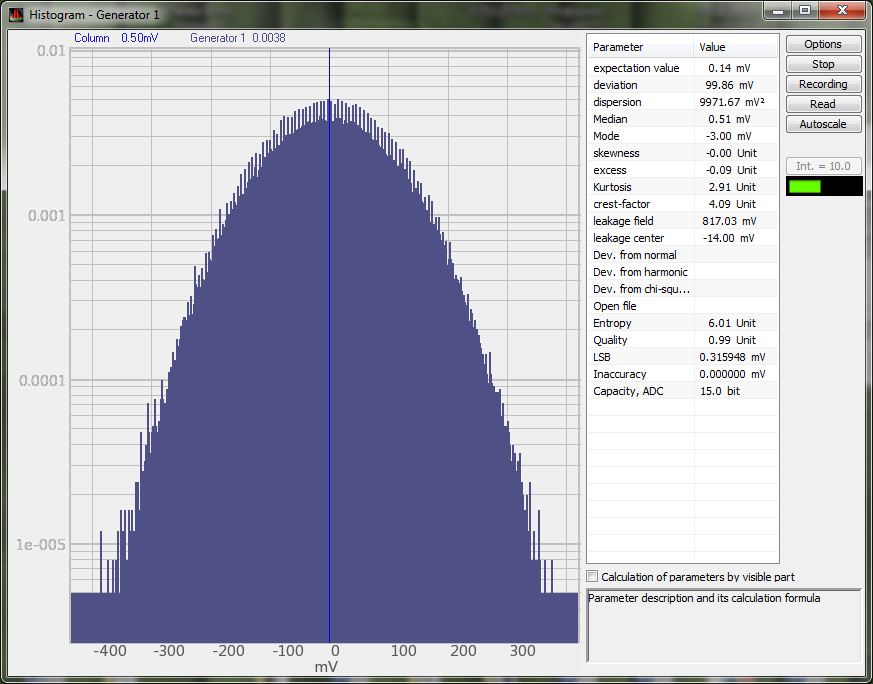 Histogram of White noise signal
Histogram of White noise signal
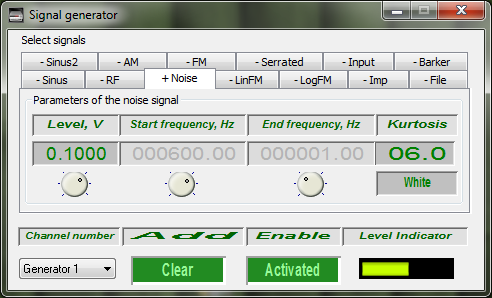
White noise signal generator: excess kurtosis – 3 (kurtosis – 6)
The possibility of setting the excess kurtosis value of the noise signal also allows to control the distribution probability, thus, it is possible to make laboratory testing quite similar to real impacts, to which the specimen is exposed in the course of its operation.
As you can clearly see from the oscilloscope pattern of the signal, the higher is the excess kurtosis level, the more high-power noise peaks (pulses) there are in the noise signal. The histogram also clearly outlines the changes in the distribution pattern – the peakedness and “tailedness” become more apparent than in the case of the normal distribution. These changes make it clear that as the excess kurtosis (kurtosis) value increases, the distribution shifts to the average distribution pattern and has a lower standard deviation value than in the case of the normal distribution.
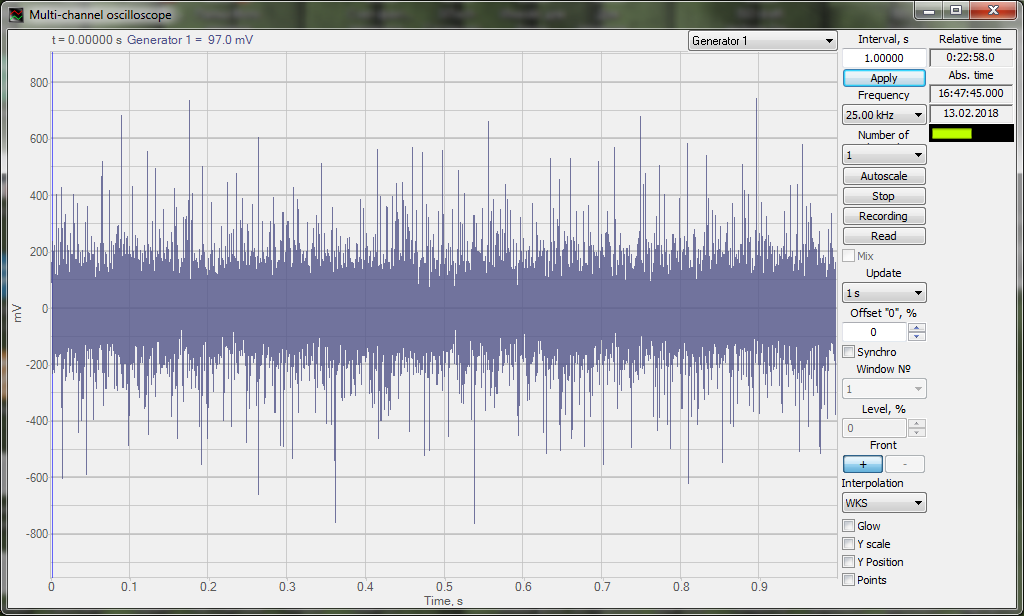 White noise signal oscilloscope pattern: excess kurtosis – 3 (kurtosis – 6)
White noise signal oscilloscope pattern: excess kurtosis – 3 (kurtosis – 6)
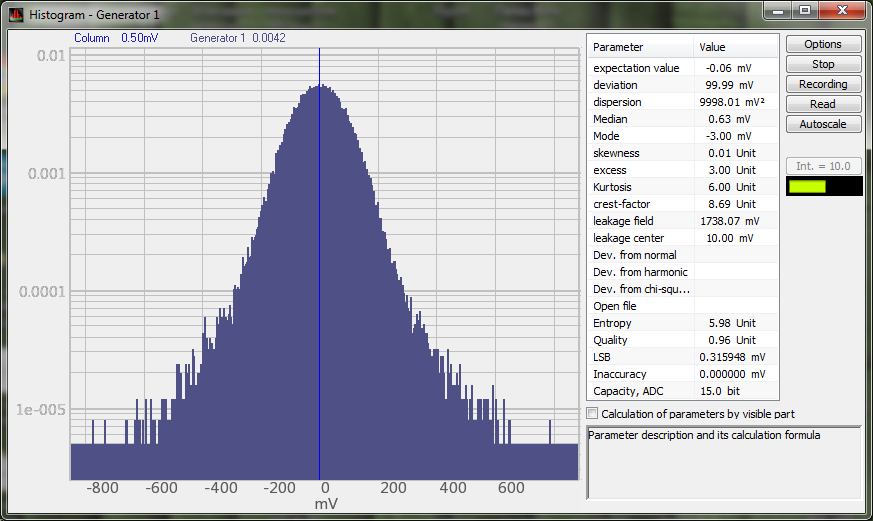
Histogram of White noise signal: excess kurtosis – 3 (kurtosis – 6).
Nowadays increasing of the excess kurtosis ratio is a popular method of accelerating the broad-band random vibration impact testing, since the increase of kurtosis ratio also leads to the growth of the acceleration peak level, while acceleration RMS value remains unchanged.
The Software Signal generator is included into the scope of the following Software packages:
Signal generator is included into Generators program section.